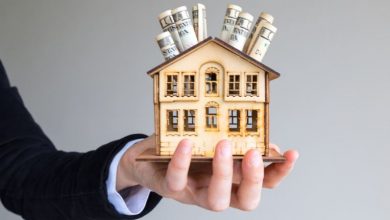Appraisal and Inspections Estate

As part of the acquire process, you will need an appraisal and one or more inspections.
Appraisal
Performed by a state-licensed appraiser, the appraisal is the official estimate for how much the property is worth, based on comparable sales of properties in the same area, the condition of the home, and other factors. It usually costs $300- $400, depending on the size of the home and what the local going rate is.
Note: An appraisal is not to be confused with a “Broker Price Opinion” (BPO), which is basically a short-cut appraisal. In a BPO, a licensed real estate broker will look up comparable sales online and then do a drive-by of the property and make an educated guess as to its current market value.
The key variance between the two is that in an appraisal, the appraiser goes inside the home and examines its condition. Are the carpets new or worn? Are there nice granite countertops or Formica? Are the bathroom tiles modern or some hideous green color from the 1960s? A drive-by of the exterior of the home cannot capture these essential items.
What if it doesn’t appraise? Let’s say the selling price is $150,000, but the appraiser says it’s worth only $140,000. In that case, you should negotiate the price down to $140,000. After all, the bank won’t lend on the property above its appraised value. If you’re really in love with the house, you might split the difference with the seller—e.g., you put an additional $5,000 into the down payment and the seller comes down in price by $5,000.
Inspections
Similarly, an inspection is conducted by a state-licensed property inspector; it tells you the current condition of the property. Is the electrical system up to code? Are the sewage pipes rusted or cracked? Do all the electrical outlets and faucets work? Does the roof leak? Are there cracks in the foundation? The inspector provides a “clean bill of health” for the property—or itemizes what’s
not up to snuff. This costs about $300-$400 on average, and as little as $200 if it’s for a condominium unit.
Almost all inspections find something wrong with the property—that’s how they justify their fees, so you have to take that into report when negotiating with the seller to fix certain items. Inspection findings should be broken down into categories, ranked by seriousness:
Items that are safety hazards such as exposed electrical wiring, or
staircases without handrails.
Structural defects such as cracks in the walls or foundation, rusted pipes, leaky roofs or basements, drafty windows, non-functioning garbage disposal, and the like.
Cosmetic defects such as mismatched paint, discolored tiles or roof
shingles, holes in interior doors or walls, cracks in the bathroom mirror, etc.
The “big five” items are the ones that can cost you a lot of money to repair later, so your inspector should focus on them: foundation, roof, electrical, plumbing, and HVAC (heating, ventilation, and air conditioning). If those are in good shape, you shouldn’t have any major expenses.
Not all inspectors do a thorough job and not all itemize their findings. You should either specify that you want the findings broken down by the three categories bulleted above or ask to see a copy of a past inspection report so you know what to expect.
War Story
I once saw an inspection report with comments like “The electrical outlets all appear to work…”.
What does that mean?? Did the inspector check each outlet, or didn’t he? If he cut corners here, where else did he cut corners? Getting a sample copy of a past report will help you avoid unpleasant surprises later.
Follow-up Inspections
Sometimes the inspector will identify potential issues and recommend that it be investigated by a specialist. In each of the following examples, make sure the
inspector provides not only an inspection report but also an estimate of how much it would cost to remediate any issues.
Wood-destroying organisms (WDO) inspection
This additional inspection may be something your inspector recommended, or in a humid climate like Louisiana it might be required by your lender. This inspection checks for termites and wood rot on the exterior siding, interior walls and baseboards, and the garage. The inspection report should tell you how serious any wood rot is, and what the cost would be to remediate it.
Mold
Mold is another health hazard and should be remediated if discovered by the initial inspection. Make sure the mold inspector reports not only on the mold, but also what caused it. If it was the result of leaky pipes causing moisture to build up somewhere in the property, then you’d want to address the leaky pipes too, or the mold will simply return. Also, make sure the mold inspector has no conflict of interest: Some will say there’s mold so they can get hired to be the one to remediate it. Make it clear that they’re there to do the inspection only.
A2-0G-A1-76




